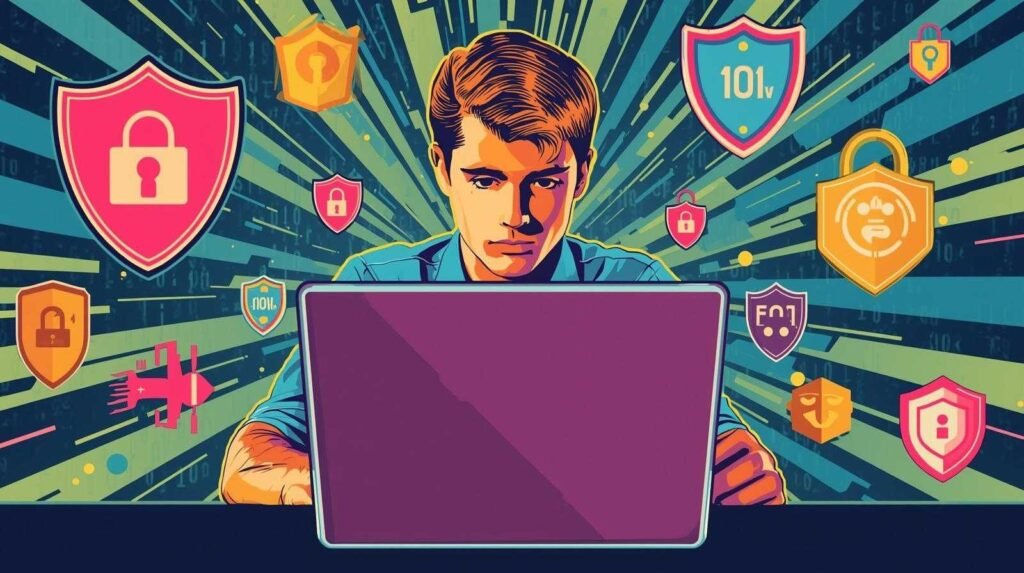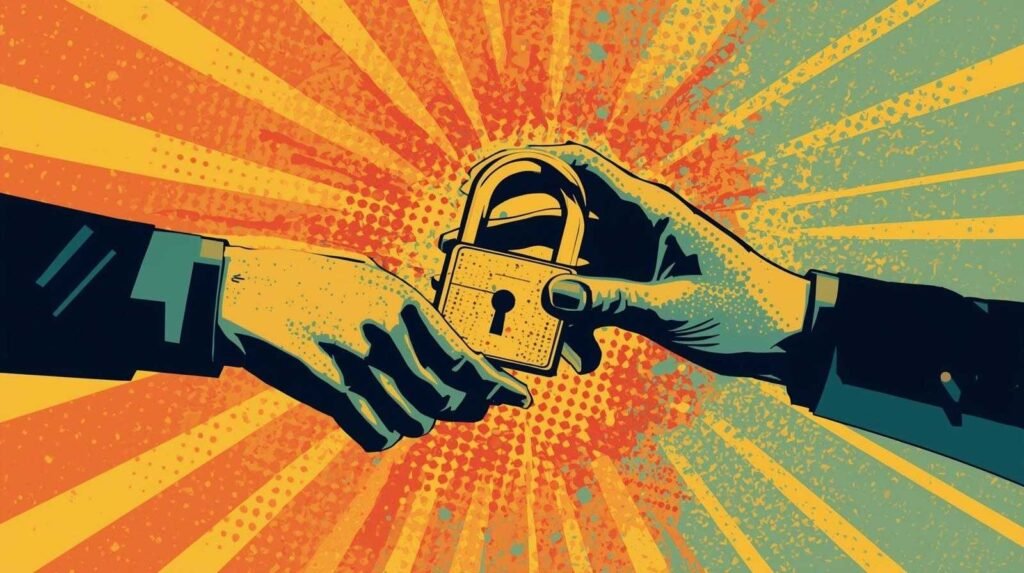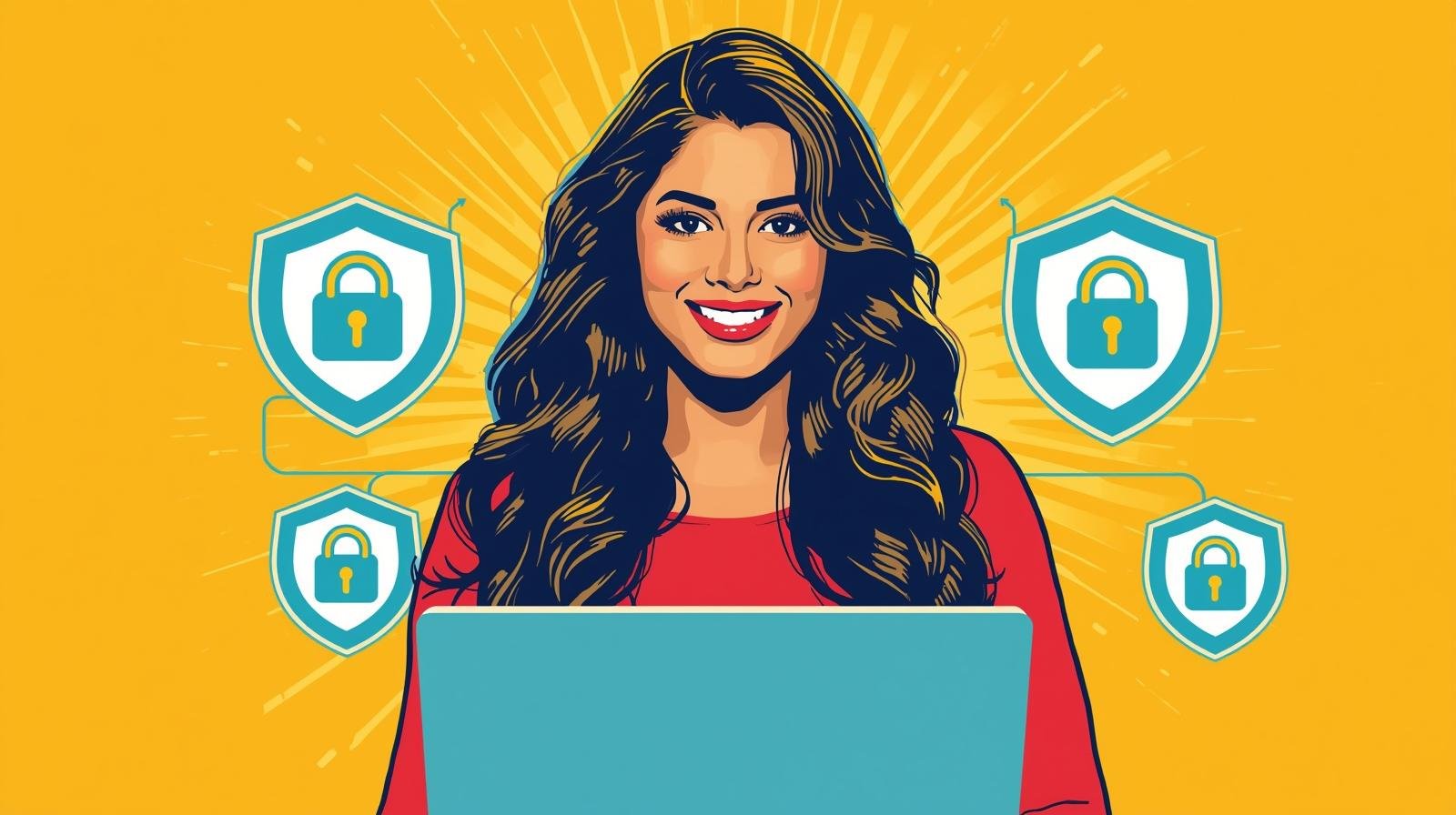Freelancer Cybersecurity: 11 Easy Tips to Protect Your Solo Business 🛡️
Freelancer Cybersecurity isn’t a luxury—it’s your daily insurance against data leaks, invoice fraud, and reputation damage. Without an in-house IT team, you are the IT team. This guide gives freelance cybersecurity tips you can apply today, without expensive tools or complex setups.
Key Takeaways
- Small actions, big wins: password manager, 2FA, and backups get you most of the way.
- Work safely from anywhere: secure remote work for freelancers means VPN, encryption, and separating work from personal use.
- Protect client trust: protect client data as freelancer with clear rules, safe sharing, and access limits.
- Be ready for incidents: a one-page plan speeds up your response when something goes wrong.
Why Freelancer Cybersecurity Matters 🛡️
Freelancers handle sensitive client data—briefings, contracts, invoices, access tokens—across laptops and phones, often on the go. Attackers love soft targets: accounts without 2FA, reused passwords, unpatched apps, and public Wi-Fi. Getting the basics right prevents most incidents and makes you look enterprise-grade in your client’s eyes.
When I started freelancing, I honestly thought I was too “small” to be a target. One day, I received a fake invoice that looked almost identical to a real client’s, down to the logo and formatting. Double-checking the sender saved me from losing a full month’s income. That experience taught me that cybersecurity for freelancers isn’t optional — it’s survival.
Case Study 1 — The Phishing Invoice That Almost Slipped Through 💸
A UK-based freelance designer received an email “from” a long-term client requesting urgent payment detail changes. The message used a familiar tone, a near-perfect logo, and even referenced a real project ID scraped from past emails. She nearly updated the IBAN in her accounting tool—but paused to verify via a quick voice call. The client confirmed they’d never sent that request. The attacker had set up a lookalike domain (one letter swapped) and timed the email for Friday afternoon fatigue.
What fixed it: a strict “second-channel verification” rule for payment changes, plus a fixed invoice template with bank details in both text and PDF.
Takeaway: For cybersecurity for freelancers, process beats guesswork—make verification a habit.
“Cybercriminals may target freelancers due to the potential for a lack of security on their devices and less corporate support for adhering to best practices to safeguard themselves from hackers and threats.”


✨ Read more about cybersecurity
The 11-Step Freelancer Cybersecurity Shield 🧩
1) Password Manager + 2FA 🚪
Why: weak or reused passwords remain the #1 entry point.
Action: pick a password manager for freelancers and enable two-factor authentication on email, cloud storage, accounting, payment providers, and socials.
Extra: print/export 3–5 recovery codes and store them offline.
2) Email Security & Phishing Hygiene 📧
Why: most attacks start in your inbox.
Action: verify domains, don’t enable macros, and be skeptical of “urgent / payment / reset” messages.
Pro tip: mail rule → attachments from unknown senders land in “Quarantine.”
3) Keep Devices Updated + Full-Disk Encryption 🔄
Why: unpatched systems are low-hanging fruit.
Action: enable auto-updates, turn on full-disk encryption (BitLocker/FileVault/LUKS), and auto-lock after 5 minutes.
Extra: use a separate admin account.
4) VPN for Freelance Work 🌍
Why: public or weak Wi-Fi exposes your traffic—your client data can be intercepted in seconds.
Action: use a reliable VPN on all devices; avoid open Wi-Fi. Prefer your phone hotspot over unknown networks.
Proton Advantage: Proton’s suite goes beyond just VPN.
Proton Suite Comparison for Freelancer Cybersecurity 🌐
Don’t patch together random apps that barely integrate. Proton gives you a suite where each tool covers the other’s weaknesses: VPN for traffic, Pass for passwords, Mail & Drive for communication and storage. It’s the fastest way to professional freelancer cybersecurity without vendor chaos.
| Proton Tool | Main Benefit for Freelancers | Extra Security Perk |
| Proton VPN | Encrypted traffic on public/home Wi-Fi | Kill switch + Secure Core routing |
| Proton Pass | Manage unique passwords with 2FA | Secure sharing across devices |
| Proton Mail | Encrypted client communication | Zero-access architecture |
| Proton Drive | Secure file storage & sharing | End-to-end encryption |
I used to work in coffee shops all the time, happily connected to free Wi-Fi. One afternoon, I noticed a suspicious login attempt on my email right after finishing a session on public Wi-Fi. That scare pushed me to use a VPN permanently — now Proton VPN is always on when I’m outside my home network.


5) Secure Remote Work for Freelancers 🏡
Why: mixing work and personal multiplies risk.
Action: separate browser profiles or OS accounts; limit extensions; sandbox downloads.
Extra: consider a lightweight, work-only device.
6) Protect Client Data as Freelancer 🔐
Why: client trust is your brand.
Action: collect only what you need; encrypt data; share via least-privilege folders; revoke access after delivery.
Extra: add a 1-page Data Handling Policy to contracts.
7) Browser & Document Hardening 🌐
Why: drive-by downloads and maldocs still work.
Action: block third-party cookies; open docs in Protected View; disable macros.
Extra: keep one trusted ad-blocker—don’t overload extensions.
8) Backups: 3-2-1 (and Test Restore) 💾
Why: a backup you never tested = fake safety.
Action: 3-2-1 rule → 3 copies, 2 media, 1 off-site.
Extra: quarterly restore test.
Early in my career, I lost half a client project because my laptop crashed and I had no backups. Rebuilding everything cost me days of unpaid work and a lot of stress. Ever since, I stick religiously to the 3-2-1 rule and test my restores — it’s boring until the day it saves your business.
Case Study 2 — The Laptop Crash and the “Fake” Backup 💾
A web copywriter lost a laptop to a sudden SSD failure two days before a client launch. He had “a backup”… but had never tested restore. The external drive held old versions, and several folders were excluded by mistake. He spent a weekend rebuilding content from drafts and client emails—unpaid, stressed, and close to missing the deadline.
What fixed it: adopting the 3-2-1 rule (three copies, two media, one off-site), enabling daily automated backups, and scheduling a 10-minute quarterly restore test. Now he also encrypts the backup drive and keeps a small “disaster card” listing what to restore first.
Takeaway: In cybersecurity for freelancers, backups only count when you can restore—test them before you need them.


9) Payment Security & Invoice Fraud 💳
Why: invoice tampering targets freelancers.
Action: verify bank changes via voice/video; use consistent invoice template; sign digitally.
Extra: prefer escrow or reputable PSPs with 2FA.
10) Contracts, NDAs & E-Signing 📝
Why: legal clarity reduces technical risk.
Action: define retention periods, access limits, deletion rules. Use e-sign tools with audit trails.
Extra: include a security incident clause.
11) Mini Incident Response Plan 🚨
Why: speed limits damage.
Action: 1 A4 with:
- Triggers: phishing, lost device, odd login
- Steps: disconnect, reset, revoke, notify
- Contacts: clients, partners, backups
Extra: rehearse 15 min twice a year.
✨ Explore more about cybersecurity


Case Study 3 — Coffee Shop Wi-Fi and the Stolen Session ☕️
A Berlin-based freelance developer pushed a small update from a coffee shop on open Wi-Fi. Minutes later, an attacker replayed a stolen session cookie and accessed his project dashboard. There was no password change alert—just odd activity: toggled settings and a test payment created. He killed access, but the scare was real.
What fixed it: he switched to VPN for freelance work on all untrusted networks, enabled device-bound passkeys where possible, forced HTTPS-only mode in the browser, and set up login alerts + WebAuthn for the dashboard. He also moved to separate work/personal browser profiles and banned extensions he didn’t need.
Takeaway: On public Wi-Fi, encryption and strong authentication aren’t “nice to have.” For cybersecurity for freelancers, always assume the network is hostile—use a VPN, passkeys/WebAuthn, and tight session controls.
Freelancer Cybersecurity — Real-World Risks vs. Protections ⚠️
Theory is nice, but freelancers want to know what can go wrong and which defense stops it. The table below links common risks to the exact “shield” from your 11-step plan.
| Real-World Risk | Example Attack | Freelancer Shield |
| Phishing invoice | Fake email changes bank details | Verify via second channel + fixed invoice template |
| Lost laptop | Device stolen at a café | Full-disk encryption + tested backups |
| Public Wi-Fi | Traffic intercepted | VPN for freelance work + hotspot fallback |
| Overshared drive | Client folder leaked | time-bound sharing |
Another lesson I learned the hard way was working from cafés without a VPN. Once, while on public Wi-Fi, I noticed a strange login attempt on my email minutes later. Since then, cybersecurity for freelancers has been my top priority, starting with a VPN and separate browser profiles for client work.
Freelancer Cybersecurity Quick-Start Plan (7 Days) 🚀
No time to implement everything at once? This 7-day micro-plan adds one layer each day. After a week, you’ll already have a strong foundation in place.
| Day | Action |
|---|---|
| 1 | Password manager + 2FA |
| 2 | Updates + full-disk encryption |
| 3 | VPN setup + router refresh |
| 4 | Separate work/personal profiles |
| 5 | Set up 3-2-1 backups + restore test |
| 6 | Write 1-page Data Policy |
| 7 | Create + rehearse IR plan |
Common Freelancer Security Mistakes to Avoid 🚫
Even with the best intentions, many freelancers still fall into the same traps when it comes to protecting their solo business. One of the biggest mistakes is reusing passwords across multiple accounts. It feels convenient at first, but once one password leaks, everything from your email to your invoicing platform is at risk.
Another common error is trusting public Wi-Fi without a VPN. Cafés, airports, and co-working spaces may feel safe, but the traffic on those networks can be intercepted within minutes. Always connect through a VPN for freelance work to protect client projects and your own credentials.
Freelancers also forget to revoke old access. Maybe you shared a Google Drive folder with a client two years ago or left an account linked to a temporary collaborator. If you don’t regularly review access, sensitive files can remain exposed long after the project ends.
A fourth mistake is skipping software updates because you’re “too busy” or worried about breaking something. Outdated operating systems and plugins are a hacker’s best friend. Scheduling automatic updates ensures you close known vulnerabilities before attackers can exploit them.
Finally, many underestimate the value of testing backups. Having a backup that you never tried to restore is almost the same as having none. A simple test once a quarter ensures your 3-2-1 backup strategy is more than theory — it’s a real safety net.Another silent risk is mixing work and personal accounts. Using the same browser for client contracts and random social media sites multiplies exposure to phishing and malware. Keeping your freelance environment separate — even with just different browser profiles — reduces cross-contamination and keeps client data safer.
personal reflection 💭
At the end of the day, I don’t see security as a chore anymore — it’s just part of my freelance rhythm. My routine is simple: Proton VPN on when I work outside, a password manager for every account, and a quick Friday check of my backups. These small habits give me peace of mind and prove to my clients that I take cybersecurity for freelancers seriously.
Read also Remote Work Cybersecurity — 11 Tips for Freelancers & Remote Teams 🚀


Frequently Asked Qeuestions
❓ What are the best cybersecurity tips for freelancers working remotely?
Strong passwords + 2FA, VPN on untrusted Wi-Fi, separate profiles, and backups.
❓ Do I really need a VPN for freelance work?
Yes—VPN encrypts traffic and protects client data.
❓ How can I protect client data as a freelancer?
Minimize, encrypt, limit access, delete when done.
❓ Which password manager is best?
Choose one with 2FA, secure sharing, passkeys.
❓ What should my IR plan include?
Triggers, immediate steps, contacts, backups, client comms.
❓ How often should freelancers review their security setup?
At least once a quarter. Freelancers often get busy with projects and forget that updates, backups, and access reviews pile up over time. A quick 30-minute review every three months keeps your defenses sharp. Check for software updates, expired passwords, and whether old clients still have access to shared folders. This small habit makes cybersecurity for freelancers proactive instead of reactive.
❓ Is investing in paid security tools worth it for freelancers?
Yes — if those tools save you time or reduce risk in high-value projects. Free tools like password managers and VPNs cover the basics, but premium versions often add features like stronger encryption, secure sharing, or priority support. As your freelance business grows, even one avoided breach can save weeks of lost income. Think of it as an insurance policy for your solo career.
🧾Transparent Affiliate Disclosure
Proton links are referrals.
I earn bonus storage if you upgrade at no extra cost to you.
I’ve used Proton since 2023

